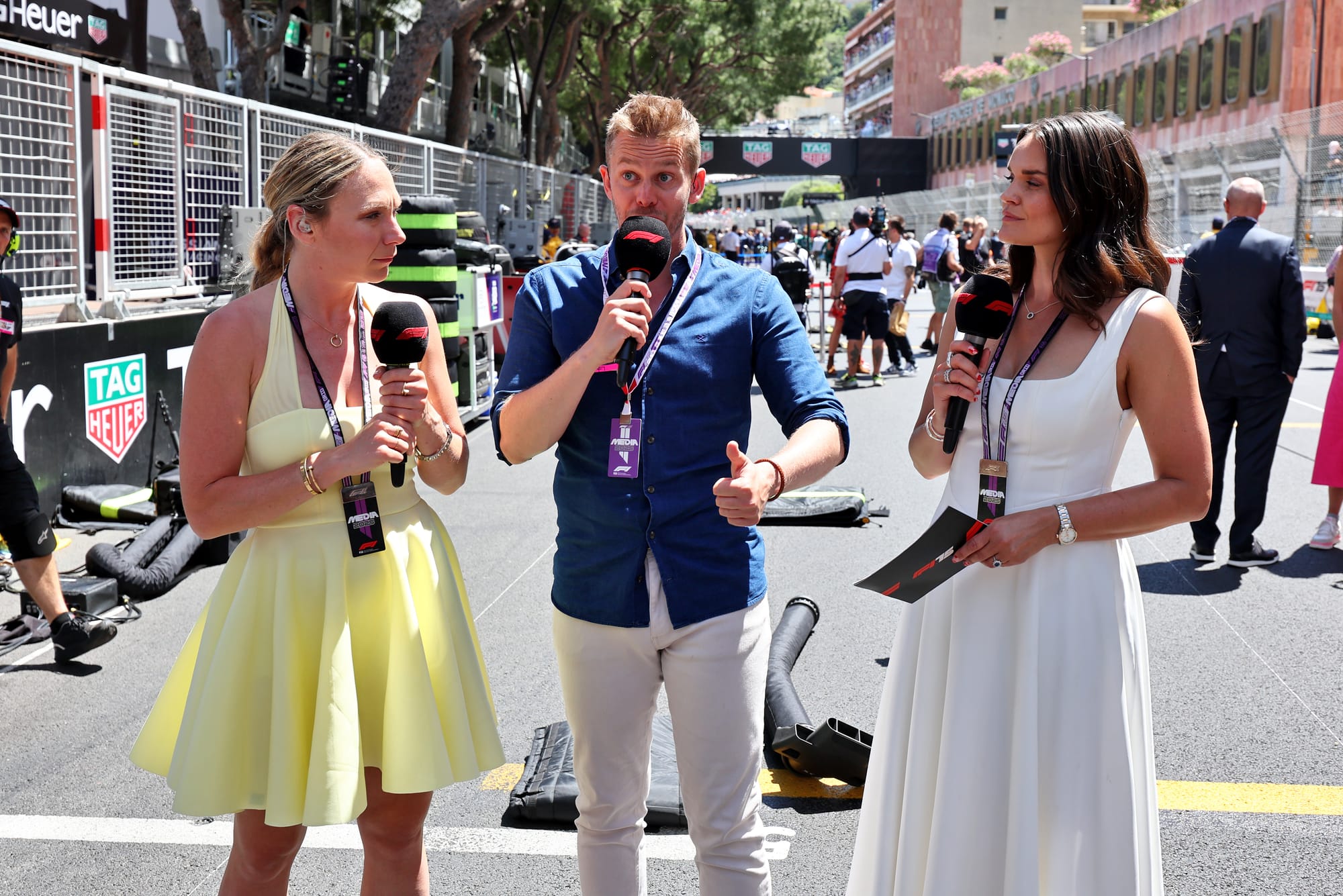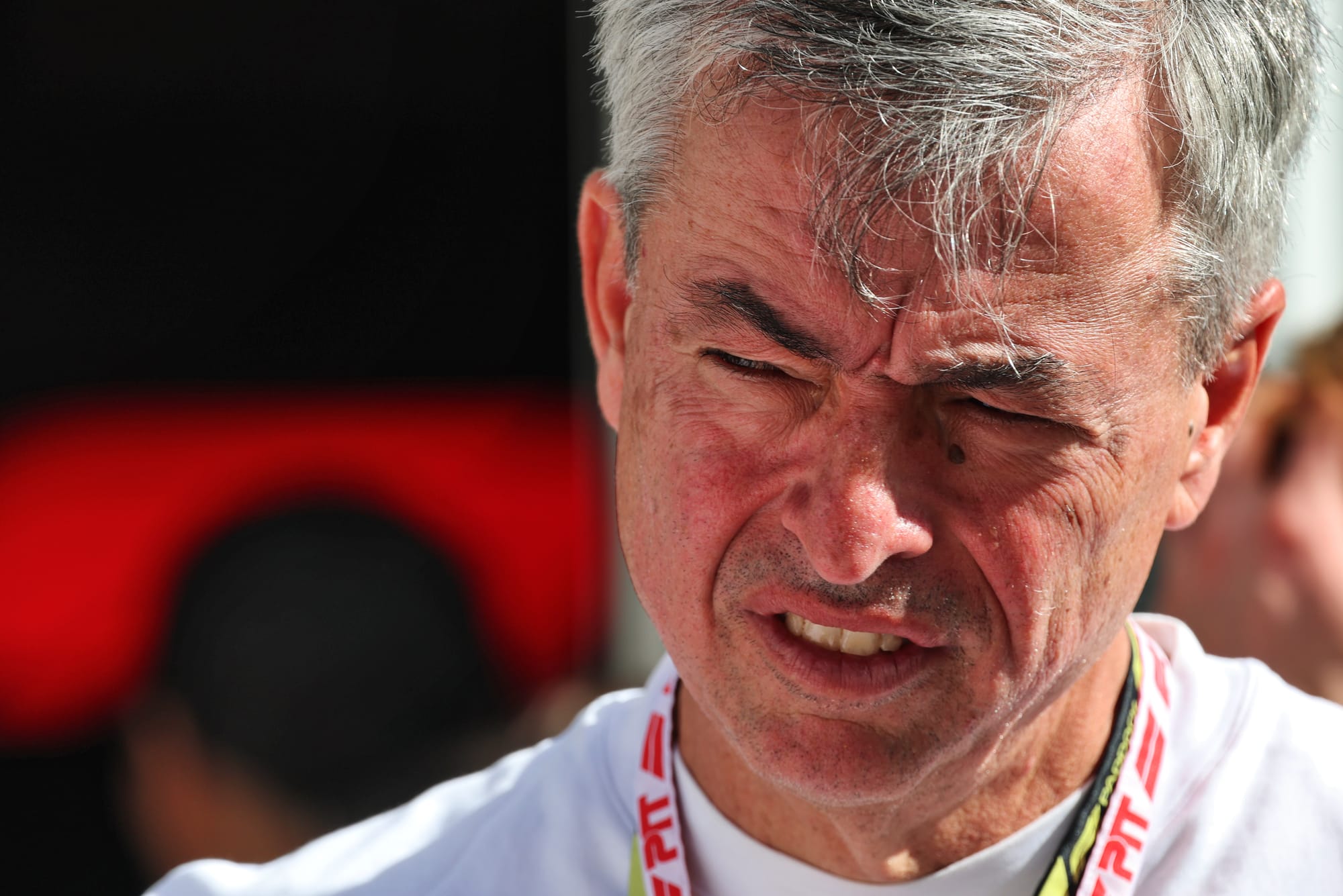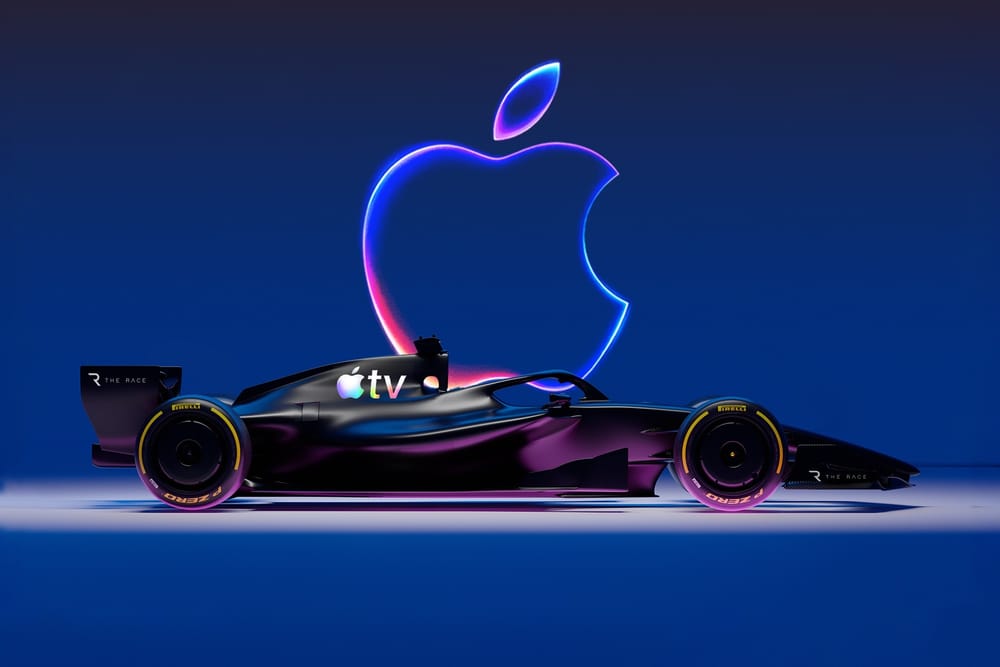Just as the arrival of the Netflix series Drive to Survive proved defining in opening up the Formula 1 fanbase, so too Apple's US deal could mark a turning point in how we all experience F1 in the future.
The Apple deal, in its simplest terms, involves only the broadcast rights in the US (for now), but there are deeper motivations and opportunities at play.
It marks a sea-shift change in moving away from what Liberty Media has called an "antiquated" view of the key metric being about how many people tune in on Sundays to watch an entire race.
Instead, this is about taking F1 to more people and providing them with the kind of content they want, how they want it and when they want it. Plus, making it better than ever.
This could take F1 audiences to places that none of us can predict right now - because ideas for what is possible may not even be on the radar within the corridors of F1, nor the engineering meetings at Apple.
But don’t expect a revolution overnight, because there are some areas where Apple wants to take its time before it starts shaking the tree.
The coverage itself

While Apple has a bold long-term vision, it’s not going to run before it can walk when it comes to the actual broadcasts.
So don’t expect the Apple TV coverage to be radically different from the regular international feed when its deal begins in 2026.
While Apple has not gone official with its production and product details, we understand it will be taking the regular international feed for 2026.
So in terms of commentators and pundits, it will be using the F1 TV roster – that means the likes of Alex Jacques, Jolyon Palmer and Alex Brundle in English language from the commentary box. Plus punditry from the likes of ex-IndyCar driver James Hinchcliffe and former F1 strategist Ruth Buscombe.
There is also going to be a Spanish language feed – and we hear that there will be an option to switch to the Sky commentary feed if viewers prefer.
For Apple, there will not be immediate changes because it is more important to get its F1 package up and running with some known quantities from the start.
But The Race understands the door is open to experiment a bit with the commentary team and pundits from year two – and then even potentially do its own thing entirely from year three.
Keeping F1 TV
One critical aspect to the F1 deal was in ensuring the continuity of the F1 TV platform.
Rather than Apple seeing F1 TV as a threat and make it unavailable in its market – as is the case for UK fans who have no means to subscribe – it is being viewed as something central to the F1 offering.
So much so in fact that from 2026 F1 TV will be free to any Apple TV subscriber.
If Apple’s current US subscription price of $12.99 per month continues, then that does indeed look good value for those fans who currently subscribe to F1 TV’s premium service – which costs $16.99 per month or $129.99 per year.
It’s certainly cheaper than what UK-based fans have to pay to watch F1 on Sky.
However, that may prove to be a disappointment for any US fans who only subscribed to F1 TV’s Pro service – which was $10.99 per month or $84.99 for the year.
That Pro service is being discontinued, so any of its subscribers who want to watch F1 will have to pay more and switch to Apple TV instead – even if they do not want any of its other shows.
What we don’t know yet is how the F1 TV platform will get integrated with Apple.
For example, if you want to watch a specific driver’s onboard, will you be able to do that within Apple’s own broadcast or will there have to be a separate F1 TV element running?
Bringing new ideas to the table
There is one area where Apple wants to help make a difference immediately – and that is when it comes to what we all see at home in the live feed.
Apple pushed a lot when it came to finding new angles and using better cameras during the filming of the F1 movie over the past two years.
Now it wants to see if some of its own technology can be used in F1's live race broadcasts.
The F1 movie took things to a new level when it came to capturing onboard action.
There were new pan-tilt-zoom cameras that allowed for dynamic movement – and were used regularly throughout the F1 film.
But Apple also worked on the smallest moveable 6K cameras ever that helped take the viewer inside the cockpit for angles that we do not normally see.
Plus it engineered a custom camera module using parts from an iPhone 15 Pro that fitted inside the current F1 onboard camera mounts – but offer the colour grading possibilities that are not available in the normal broadcast.

Apple’s senior vice president of services Eddy Cue (pictured above) sees the push his company wants to make to improve the international feed shaking out as a plus for fans watching everywhere.
“The existing broadcasters hopefully will get some benefits, because we'll push working together on making the broadcast better,” he said.
“This broadcast goes out to everyone. So I think that the technology that we brought last year to the movie and putting the cameras in the cars and things like that, are things that we would like to see continued. If we do that, everyone will benefit."
Thinking more leftfield, what about the possibility of F1 races with live haptics if watched on a phone?
Those not familiar with haptics - which is the use of vibrations through digital devices to increase immersion - may not know that Apple produced a trailer for the F1 movie last year featuring this technology.
Watched on a mobile device, it vibrated in time with engine revs, or car movements, to deliver something unique.
Having something like this in live races would add a new dimension to following the action.
Apple is certainly fired up about the ability to bring new ideas to the table – and any element it adds will be a benefit to all viewers, not just those in the US.
The bigger picture at play
From F1’s perspective, the biggest success of the Apple deal is not about the money (the deal is reported to be worth around $750million) nor about what is shown on race weekends.
Instead, it is about opening the doors for F1 to a wider audience – and deliver touchpoints that have not been possible with other broadcast deals in other countries.
Apple is at heart a technology business – and its mobile phones and laptops are in the hands of billions of people around the world.
F1 is not seeing the success of this deal as being whether or not Apple TV delivers an overnight lift in the Sunday afternoon viewing figures from what ESPN had. Instead, it’s about wider market penetration.
As F1 owner Liberty Media’s CEO Derek Chang explained about the sport’s current fanbase: “I think people who ask the question of reach, and what does this [deal] imply, have somewhat of an antiquated view of what reach is.
“That’s very much stuck in a traditional television sort of way. I think nowadays you think about reach in a much different fashion.”
It is about touchpoints; and especially those that the younger more digitally savvy audience that F1 have.
So think of Apple using push notifications or a widget to ram F1's message home; or bespoke apps that make it easier than ever to follow the action.
Or its stores, which have prominence in major cities globally, running the kind of comprehensive promotional campaign that proved so successful for the F1 movie.
As Cue said: “We have millions of customers. If you look at what we did with F1 in the movie, it gives you a little bit of a flavour of the kind of things we can do, from podcasts to even music.”
What seems clear is that F1 is viewing the Apple partnership not as what is possible today – but where this can be further down the road.
Chang said: “Over the arc of a five year deal, there are products here that we haven't even begun to think about, right?
“I'm sure there's like 1000 junior engineers at Apple that woke up this morning and are like, 'Oh, these are the things we can go now go do, right?'”
If Apple delivers, those ideas could be what will shape our experience of F1 for years to come.



